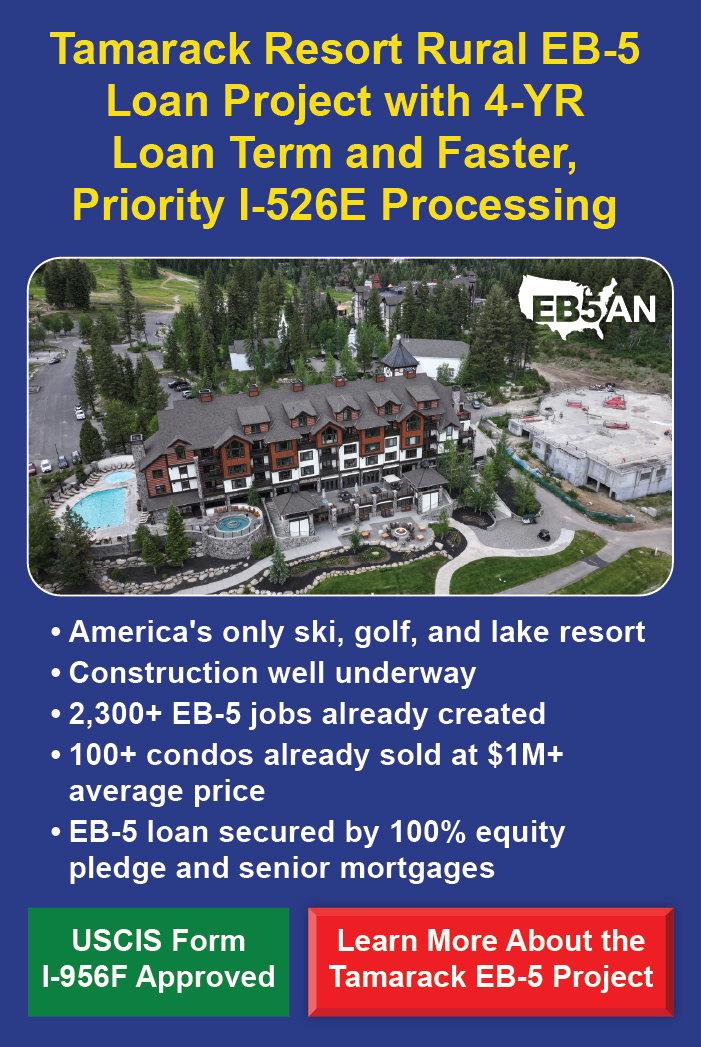
The EB-5 visa is one of the world’s most popular investor visas. It is a rare gateway for foreigners to gain residency (and eventually citizenship) rights in the world’s biggest economy through investment.
Investing in a regional center project is the most common route to an EB-5 visa—the other is direct investment. As defined by the U.S. Citizenship and Immigration Services (USCIS), “an EB-5 regional center is an economic unit, public or private, in the United States, involved with promoting economic growth.”
When a regional center project is within a targeted employment area (TEA), EB-5 applicants have to invest a minimum of $800,000, rising to $1,050,000 for non-TEA projects.
With such significant investment thresholds, investing in an EB-5 visa regional center project is a big decision that requires careful due diligence. Investors are advised to evaluate the project, developer, and regional center before taking this step. In this article, we will take a look at some due diligence best practices.
Key Factors When Assessing EB-5 Investment Opportunities
- USCIS Project Approval
- Job Creation Potential
- Regional Center Track Record
- Principals’ Experience and Background
- Investment Structure and Terms
- Immigration Risk and Redeployment
Get Your Green Card With EB5AN
Key Factors When Assessing EB-5 Investment Opportunities

USCIS Project Approval
A foundational step is confirming the project has been reviewed and approved by USCIS. The approval showcases the project’s readiness and credibility.
It’s important to note that pre-approval by USCIS does not guarantee future approval of individual petitions, but it can speed up processing times.
Job Creation Potential
The core of the EB-5 program is economic growth through job creation. Each EB-5 investment must create at least 10 full-time jobs for U.S. workers. Look for projects that are likely to exceed this minimum threshold to provide a buffer against any unforeseen issues.
It’s also important to understand how and when jobs will be created. While updated policies can affect this timeframe, it’s best to look for projects that have already started to create jobs at the due diligence stage.
Regional Center Track Record

Evaluating the regional center’s EB-5 history provides valuable insight. Key data points include:
- Number of past projects successfully completed and percentage of EB-5 capital repaid.
- USCIS approval rates for both I-526E and I-829 petitions.
- Any regional center terminations, investor lawsuits, defaults or failures to return capital.
Investors should not just focus on the number of approved projects but also discover the details behind any rejections. A high volume of denials or a pattern of RFEs (Requests for Evidence) from USCIS can be a red flag.
Principals’ Experience and Background
Beyond the regional center, it’s crucial to vet the individual principals, developers, and managers involved in a project. Investigate their professional histories, previous developments, and any legal or financial troubles.
At this stage, investors can consider a few items, such as:
- Successful experience with similar projects and/or EB-5 developments.
- Absence of criminal records, fraud allegations, SEC violations or lawsuits.
- Likelihood of the team remaining intact to manage the project long-term.
- Financial health and capitalization to weather any challenges.
EB-5 can be a long process, and it’s best to have full confidence that the team involved will operate with integrity throughout.
Investment Structure and Terms

EB-5 investment structures can vary widely regarding equity versus loan positions, at-risk requirements, refund provisions, and capital return schedules. Carefully review all documents, private placement memoranda, and subscription agreements.
Key considerations include:
- Whether the total investment will be contributed at once or via deposit and installment.
- Provisions for investment refund if Form I-526E is denied.
- Expected return on investment and whether distributions will be made during the immigration process or only upon maturity.
- Clear exit strategy specifying when and how the investment principal will be repaid after immigration requirements are met.
It’s recommended that investors speak to experienced securities counsel who can explain the investment terms and their rights and risks fully.
Immigration Risk and Redeployment
EB-5 capital must be sustained “at risk” for a minimum of two years. But what happens if the original project is completed or repays the investment early? The investor’s funds must be redeployed into one or more new projects until the required timeframe is completed.
Redeployment policies vary significantly. Some regional centers allow investors to provide input into different projects, while others don’t.
Examine the redeployment terms and the regional center’s track record with past redeployments. Ideally, look for a clear policy stating that redeployment will be into similar projects and allowing investors’ consent.
Get Your Green Card With EB5AN

These factors can provide a framework for evaluating EB-5 regional centers, but navigating the program’s complexities could be challenging for even experienced investors. The most effective approach is to hire an experienced EB-5 immigration attorney to guide you through the due diligence process.
It’s also important for EB-5 investors to stay updated on any policy changes or new laws affecting the program. By keeping up with the industry through reliable sources, EB-5 investors can ensure the regional centers and projects they’re considering meet the latest program requirements.
EB5AN can provide expert guidance through all stages of the EB-5 application process for a straightforward immigration journey. Please book a free one-on-one call with our team to discuss the specifics of your case.











